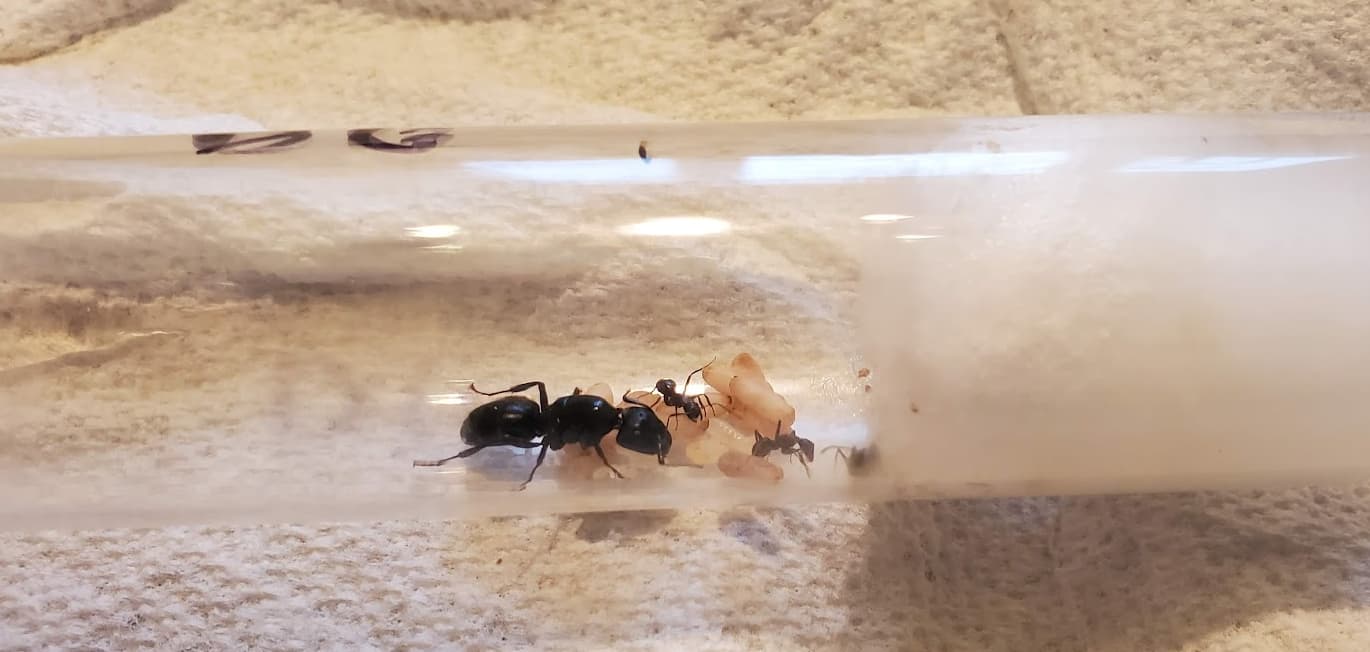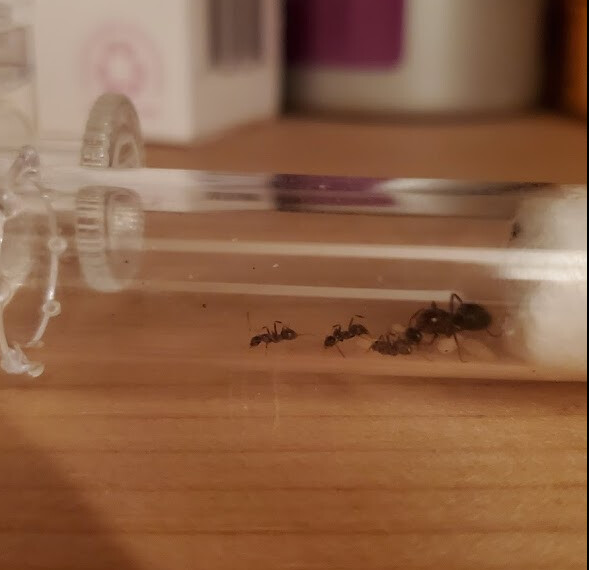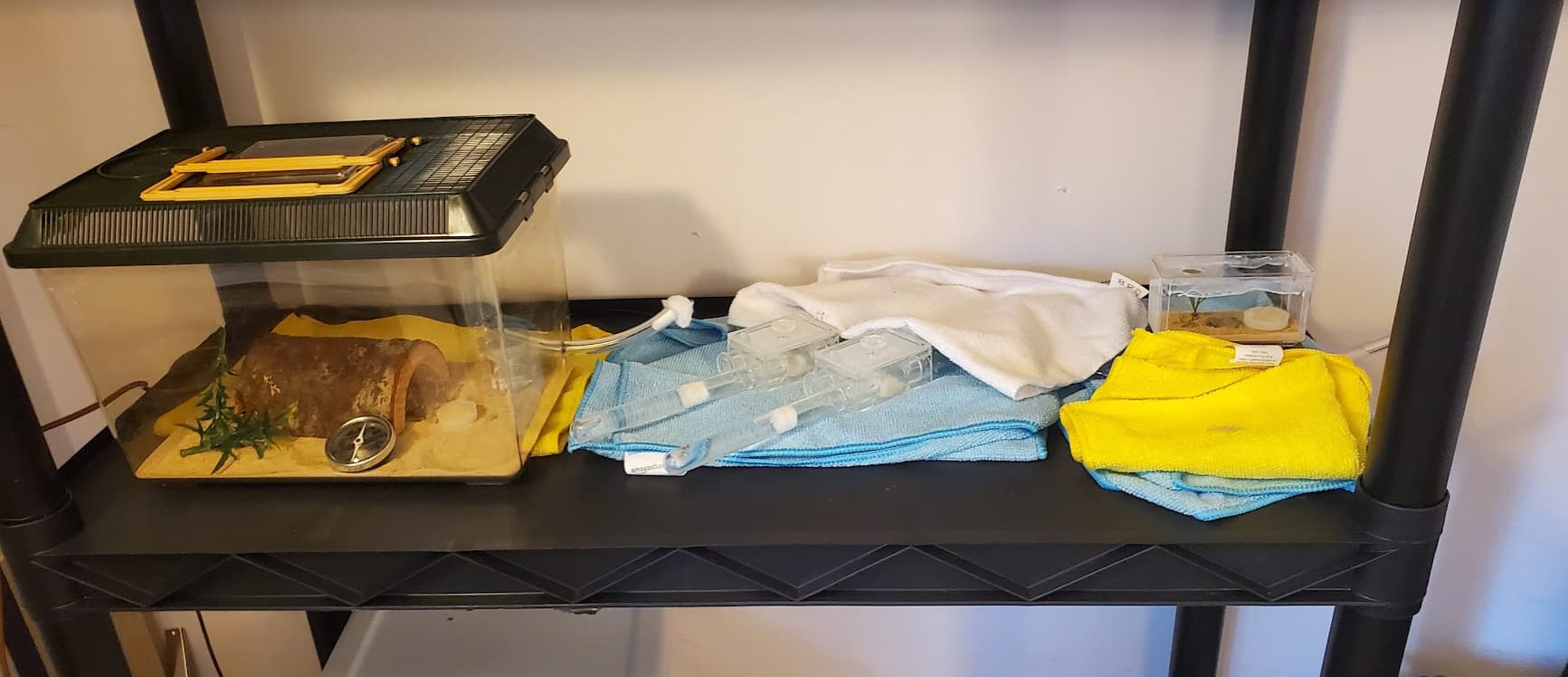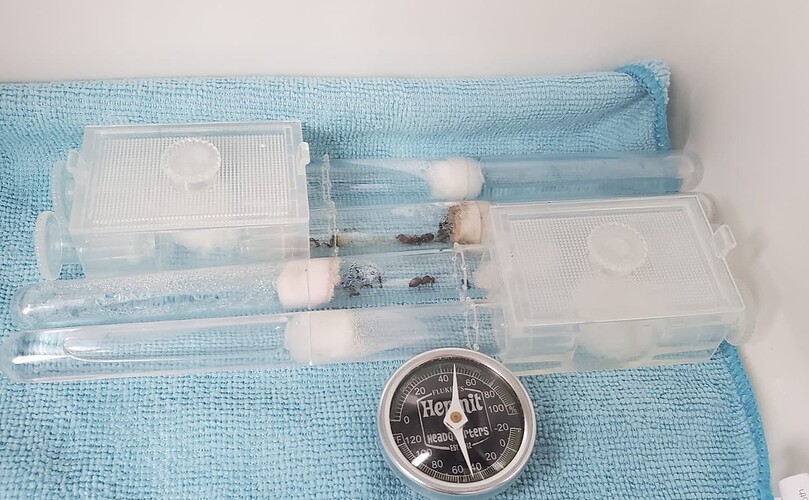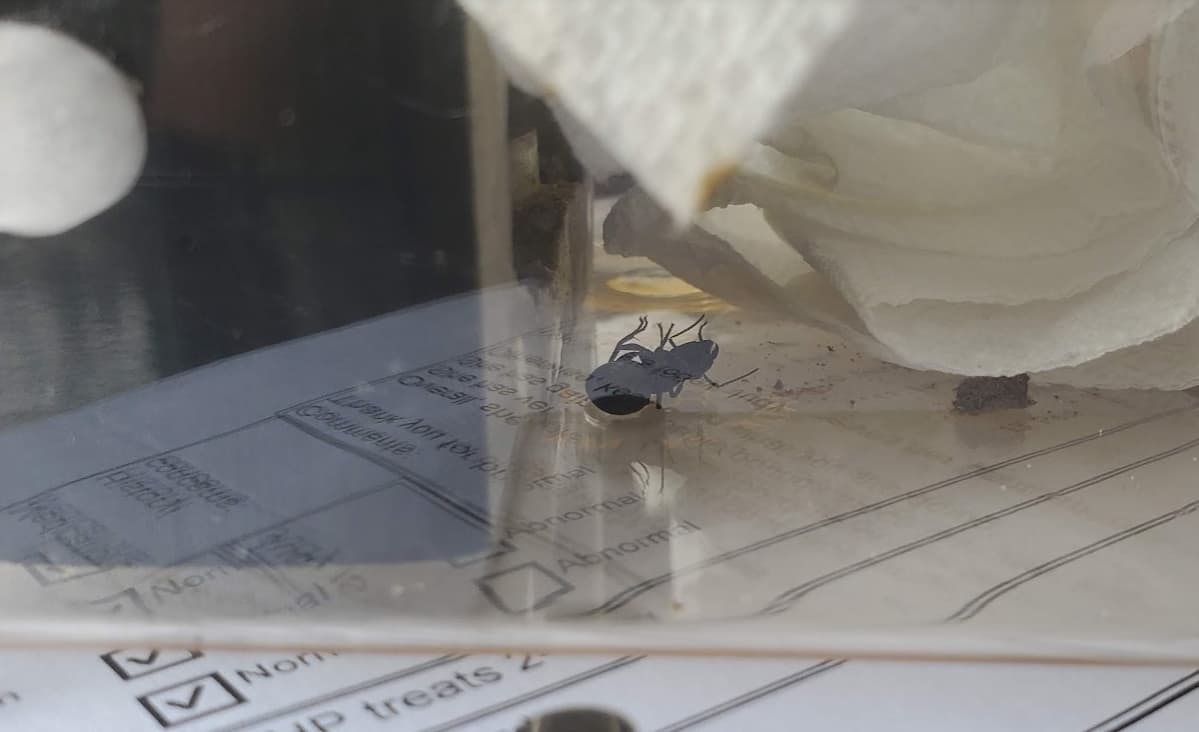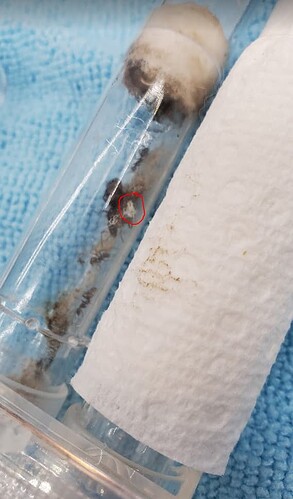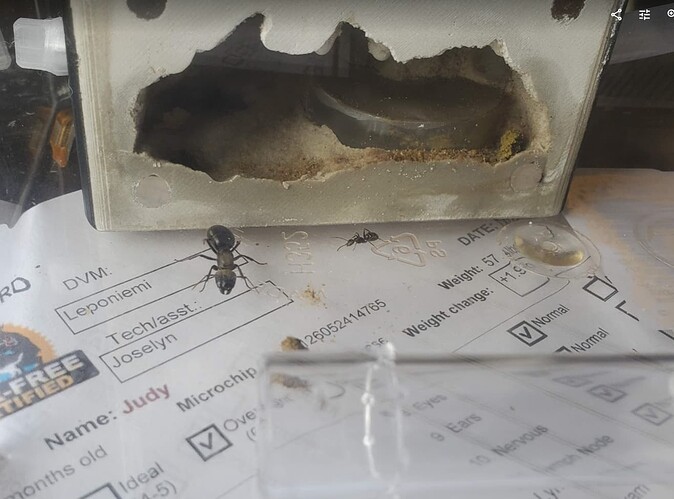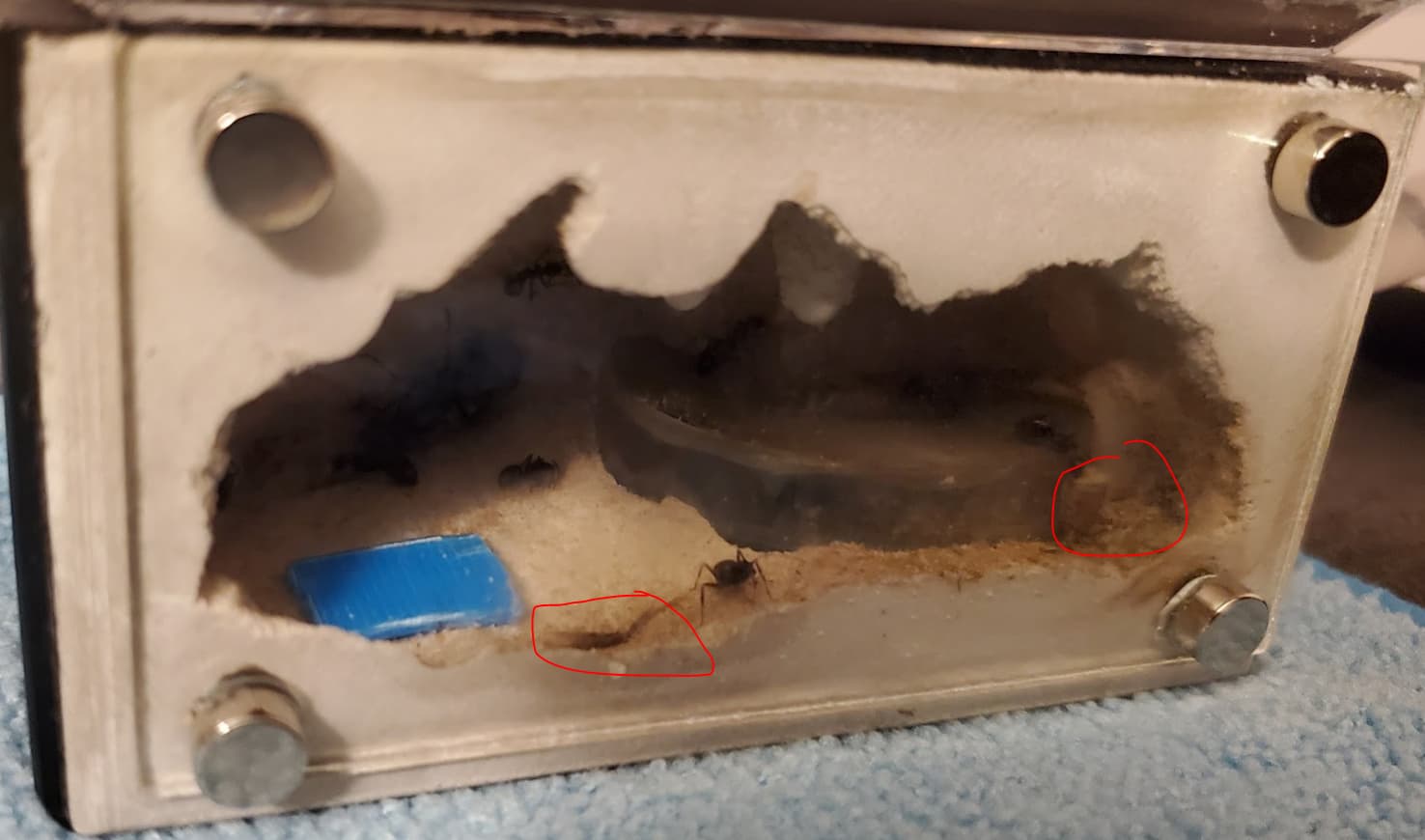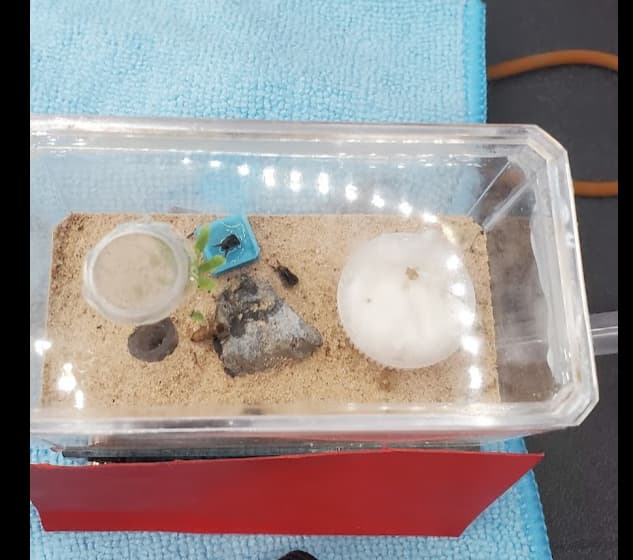Some people think ants are pests.
Some people like to keep ants as pets.
Last summer, bored, in the middle of the pandemic, I decided to start keeping an eye to the ground as I walked my dog. I would keep a trio of small containers to catch ants in, hoping to snag myself a freshly mated queen ant.
In May of last year, I caught my first big girl. She was just walking across the sidewalk. You might wonder, how can I tell if I have a queen ant. 1, they will be MUCH bigger than your typical ant. 2, they will have wings, or a large thorax with wing scars 3, they will be alone.
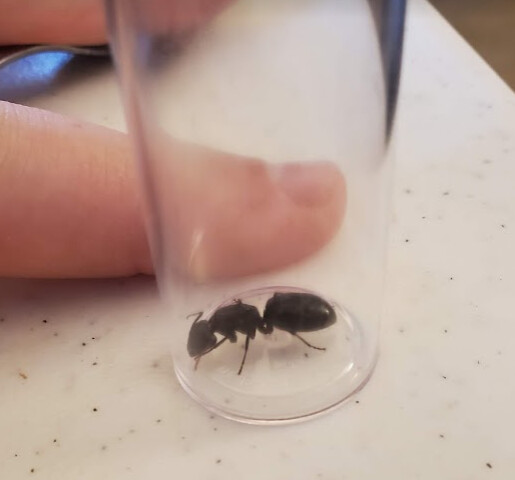
She was affectionally named “Dr Girlfriend” and identified to be a Camponotus pennsylvanicus queen.
She was then placed into a test tube setup with fresh water, and placed in a warm closet under a towel. Queen ants do not eat, as they will consumed their stored food and wing muscles for sustenence.
Very little happened for a week or so, then I noticed some small white specks underneath her. She had laid eggs, a few weeks later, in mid-july.
She looked like this (Sorry for the blurry non-macro camera shot)
Plenty of eggs and larvae.
By the end of July
Her first workers had hatched. They are referred to as Nanitics. It was time to start feeding my pets. They got a small drop of honey in the tube.
I will update this post further, as there is so much more that has happened since last summer. This is also just one of 4 colonies I have started. I found another C. penn queen, as well as 2 Formica sp. queens.
I am excited as this is the year of big growth for the colonies, as they have survived their first year of hibernation.

